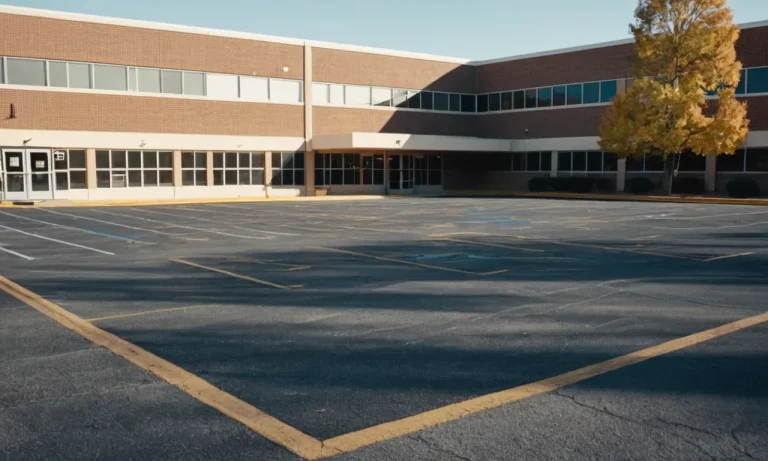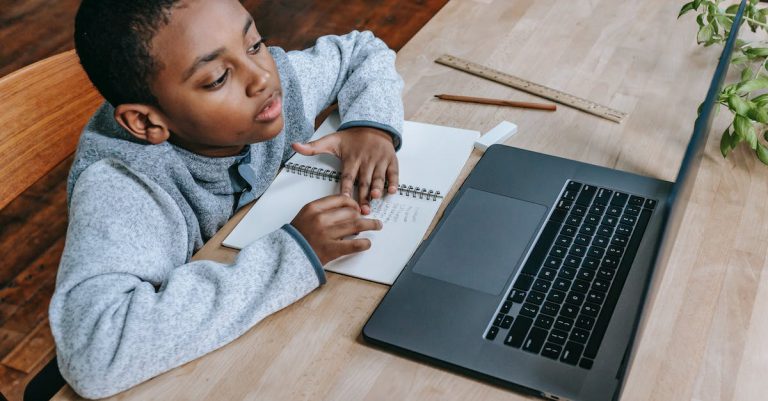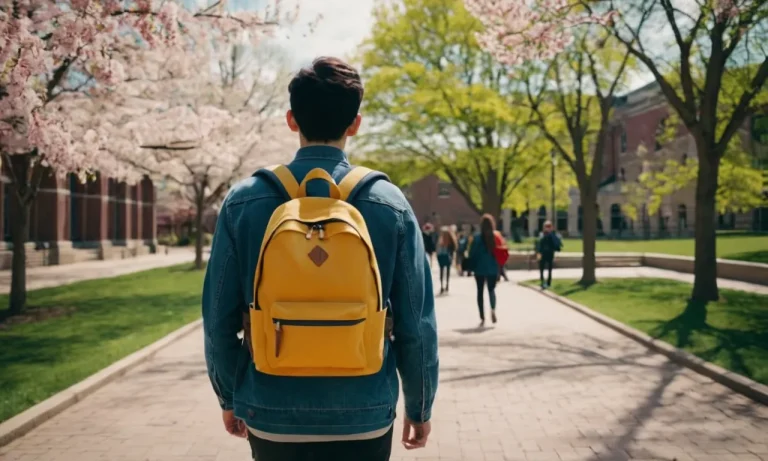In today’s digital age, the internet has become an indispensable tool for education and research. However, many schools and educational institutions often block access to certain websites, either for security reasons or to prevent distractions during class hours.
If you find yourself in a situation where you need to access a blocked website for legitimate purposes, such as research or educational resources, this guide will provide you with a comprehensive overview of the various methods you can employ.
If you’re short on time, here’s a quick answer to your question: To access blocked websites at school, you can use a Virtual Private Network (VPN), a web proxy, or a portable browser with built-in proxy functionality.
However, it’s important to note that some schools may have strict policies against circumventing their network restrictions, so proceed with caution and only use these methods for legitimate educational purposes.
In this article, we will explore different techniques to access blocked websites at school, including VPNs, web proxies, portable browsers, and more. We’ll also discuss the potential risks and legal implications associated with these methods, as well as provide tips on how to stay safe and secure while accessing blocked content.
Understanding Website Blocking at Schools
In today’s digital age, the internet has become an indispensable resource for education, research, and communication. However, schools often implement measures to restrict access to certain websites, a practice known as website blocking.
This approach aims to create a safe and controlled online environment for students, but it can also raise concerns about censorship and limitations on access to information. In this section, we’ll explore the reasons behind website blocking in schools and the common categories of restricted sites.
Why Schools Block Websites
Schools have a responsibility to provide a secure and productive learning environment for their students. They block websites for various reasons, including:
- Preventing access to inappropriate or explicit content
- Limiting distractions and promoting focus on educational activities
- Protecting students from online threats, such as cyberbullying and predatory behavior
- Ensuring compliance with legal and ethical standards
- Conserving network bandwidth and resources
According to a study by the Education Week Research Center, over 90% of school districts in the United States employ some form of internet filtering or website blocking. This highlights the widespread adoption of such measures in educational institutions.
Common Blocked Website Categories
While the specific websites blocked can vary from school to school, there are certain categories that are commonly restricted. These include:
- Adult or pornographic content
- Social media platforms (e.g., Facebook, Twitter, Instagram)
- Online gaming and entertainment sites
- Peer-to-peer file-sharing networks
- Websites promoting violence, hate speech, or illegal activities
According to a report by Lightspeed Systems, a leading provider of web filtering solutions for schools, the top three categories of blocked websites in 2021 were social media (21%), games (17%), and entertainment/streaming (15%).
These statistics highlight the efforts made by schools to minimize distractions and promote a focused learning environment.
It’s important to note that website blocking practices can be controversial, with debates surrounding issues of free speech, academic freedom, and the potential for over-blocking or inadvertent censorship.
Schools strive to strike a balance between providing a safe online environment and ensuring access to educational resources. Understanding the reasons behind website blocking and the commonly restricted categories can help students navigate the digital landscape within their school’s guidelines and policies.
Using a Virtual Private Network (VPN)
What is a VPN?
A Virtual Private Network (VPN) is a service that creates a secure, encrypted connection over the internet between your device and a VPN server. This allows you to bypass restrictions and access websites that may be blocked at your school.
When you connect to a VPN, your internet traffic is routed through the VPN server, masking your real IP address and making it appear as if you’re accessing the internet from the server’s location. This can help you circumvent censorship and access restricted content at school or work, while also providing an extra layer of privacy and security.
How to Set Up and Use a VPN
Setting up a VPN is relatively straightforward. Here are the typical steps:
- Choose a reputable VPN service (more on this later) and sign up for an account.
- Download and install the VPN app or software on your device (computer, smartphone, or tablet).
- Launch the VPN app and log in with your account credentials.
- Select a server location (preferably one outside your school’s region).
- Click the “Connect” button to establish a secure VPN connection.
Once connected, your internet traffic will be encrypted and routed through the VPN server, allowing you to access blocked websites at school without restrictions. Just remember to disconnect from the VPN when you’re done to avoid potential bandwidth throttling or other issues. It’s also a good idea to clear your browser cache and cookies after using a VPN for added privacy.
Recommended VPN Services for School Use
When choosing a VPN service for accessing blocked websites at school, it’s important to consider factors like speed, security, server locations, and pricing. Some popular and reputable VPN services for school use include:
- NordVPN – Known for its robust security features, fast speeds, and a vast server network.
- ExpressVPN – Offers reliable connections, strong encryption, and a user-friendly interface.
- Surfshark – A budget-friendly option with impressive performance and unlimited device connections.
It’s worth noting that while using a VPN can help you access blocked websites at school, some schools may have policies against using VPNs on their network. Always check your school’s acceptable use policy and exercise caution when using a VPN on school-provided devices or networks. 😉
Web Proxies and Proxy Websites
When schools or workplaces block certain websites, accessing them can become a challenge. However, web proxies and proxy websites offer a potential solution to bypass these restrictions. These tools act as intermediaries, allowing users to access restricted content by routing their requests through a different server.
Understanding Web Proxies
A web proxy is a server that acts as a gateway between your device and the internet. When you visit a website through a proxy, your request is first sent to the proxy server, which then retrieves the content from the desired website and forwards it back to you.
This process effectively masks your IP address and can help circumvent website blocks or censorship imposed by your network administrator. According to Cloudflare, a leading web security and performance company, proxies are commonly used for privacy, security, and censorship evasion purposes.
Popular Web Proxy Sites
There are numerous web proxy sites available online, each offering varying levels of anonymity, speed, and reliability. Some popular options include:
It’s worth noting that the availability and performance of these sites can vary, and some may be blocked by your network administrator.
Potential Risks of Using Web Proxies
While web proxies can provide access to restricted websites, they also come with potential risks. One major concern is the lack of encryption or security measures on some proxy sites, which can leave your data vulnerable to interception or monitoring. Additionally, some proxy servers may log your browsing activity or inject unwanted advertisements or malware into the websites you visit.
😬
According to a study by VPNMentor, a staggering 24.67% of organizations have experienced a malware infection or data breach due to the use of web proxies. Therefore, it’s essential to exercise caution and only use reputable, secure proxy services.
👍 Alternatively, consider using a virtual private network (VPN) for a more secure and private browsing experience.
| Proxy Type | Advantages | Disadvantages |
|---|---|---|
| Web Proxy |
|
|
| VPN |
|
|
Portable Browsers with Built-in Proxy Functionality
Accessing blocked websites at school can be a real challenge, but one clever solution is to use portable browsers with built-in proxy functionality. These nifty little programs can help you bypass internet restrictions and access the sites you need, all while keeping your activities discreet and secure.
😎
What are Portable Browsers?
Portable browsers are self-contained web browsers that can be run from a USB flash drive or other portable storage device. They don’t require installation on the computer you’re using, which makes them incredibly convenient and versatile.
Best of all, they leave no trace on the host machine, so your browsing history and other data remain private. According to a survey by PortableApps.com, over 60% of users reported using portable browsers to access restricted content at school or work.
Popular Portable Browsers for Accessing Blocked Sites
- Portable Firefox: Based on the popular Firefox browser, Portable Firefox offers a wide range of proxy add-ons and extensions to help you bypass restrictions.
- Portable Opera: Portable Opera comes with a built-in VPN feature that can help you access blocked sites with ease.
- Portable Chromium: As an open-source version of Google Chrome, Portable Chromium offers a lightweight and secure browsing experience with various proxy extensions available.
Setting Up and Using Portable Browsers
Using portable browsers is a breeze! Simply download the portable version of your preferred browser, extract the files to a USB drive or other portable storage device, and you’re good to go. Once you’ve launched the browser, you can install proxy extensions or configure the built-in proxy settings to access blocked websites at school.
🔓
It’s important to note, however, that while portable browsers can help you bypass restrictions, you should always use them responsibly and respect your school’s rules and policies. Don’t let the temptation of unrestricted internet access lead you down a path of trouble! 😇
| Browser | Built-in Proxy | Proxy Extensions |
|---|---|---|
| Portable Firefox | ❌ | FoxyProxy, Proxy SwitchyOmega |
| Portable Opera | ✅ | Opera VPN, Proxy SwitchyOmega |
| Portable Chromium | ❌ | Proxy SwitchyOmega, Proxy Helper |
So, there you have it! Portable browsers with built-in proxy functionality can be a game-changer when it comes to accessing blocked websites at school. Just remember to use them wisely and stay on the right side of the rules. Happy browsing! 👍
Other Methods and Considerations
Using Mobile Data or Personal Hotspots
While using proxy sites or VPNs can be effective ways to access blocked websites at school, there’s another option that you might want to consider: using your mobile data or personal hotspot. If your school’s network restrictions don’t extend to your personal devices, you can simply connect to the internet through your smartphone’s data plan or create a personal hotspot to access the internet independently.
This method can be particularly useful if you need to access websites for important research or educational purposes, and the school’s filters are too restrictive.
However, it’s important to note that some schools may have policies in place that prohibit the use of personal hotspots or mobile data on campus. Be sure to check your school’s rules and regulations before attempting this method.
Additionally, keep in mind that using your mobile data can quickly consume your monthly data allowance, so it’s essential to monitor your usage and avoid excessive streaming or downloading if you’re on a limited data plan.
Legal and Ethical Considerations
While accessing blocked websites at school may seem like a harmless endeavor, it’s crucial to consider the legal and ethical implications of your actions. Many schools implement website filters and restrictions for valid reasons, such as protecting students from inappropriate or harmful content, preventing cyberbullying, and ensuring a productive learning environment.
Circumventing these restrictions without proper authorization could potentially violate school policies or even local laws. It’s essential to respect the rules and regulations set forth by your educational institution.
If you believe a website is being unfairly blocked or if you have a legitimate educational need to access a particular site, it’s advisable to discuss the matter with your teachers or school administrators and seek proper approval.
Staying Safe and Secure Online
Regardless of the method you choose to access blocked websites, it’s crucial to prioritize your online safety and security. Reputable resources like the Federal Trade Commission’s website (https://www.consumer.ftc.gov/topics/online-safety) offer valuable tips and guidelines for staying safe online. Some key points to keep in mind include:
- Be cautious when downloading software or files from untrusted sources, as they may contain malware or viruses.
- Never share personal information, such as passwords or financial details, with unknown parties or on unsecured websites.
- Use strong, unique passwords for all your online accounts and enable two-factor authentication whenever possible.
- Keep your software and operating systems up-to-date to ensure you have the latest security patches and protections.
Remember, while accessing blocked websites may seem tempting, it’s essential to weigh the potential risks and consequences against the perceived benefits. Always prioritize your safety, security, and ethical conduct when navigating the online world. 😊
Conclusion
Accessing blocked websites at school can be a challenging task, but with the right tools and techniques, it is possible to bypass these restrictions for legitimate educational purposes. Whether you choose to use a VPN, web proxy, or portable browser, it’s crucial to understand the potential risks and legal implications associated with these methods.
Remember, while these methods can provide access to valuable educational resources, it’s essential to use them responsibly and ethically. Always prioritize your safety and security online, and never engage in any illegal activities or violate your school’s policies.
By following the guidelines and recommendations outlined in this article, you can navigate the world of blocked websites at school with confidence and access the information you need while staying compliant with your institution’s rules and regulations.






